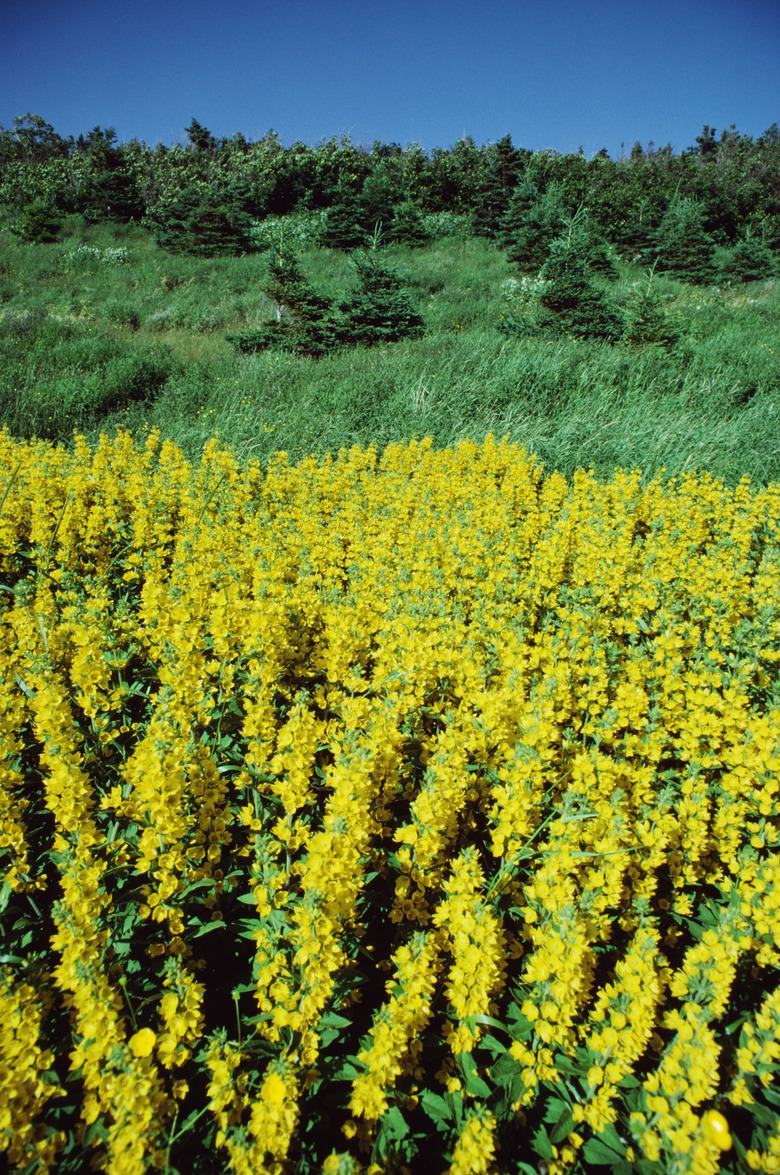Brazilian Tree Fern Care And Maintenance
A member of the pea family, the Brazilian fern tree (Schizolobium parahyba) is a towering tropical tree that may reach heights upwards of 100 feet. The fast-growing tree is characterized by clusters of bright yellow, pealike flowers and large bipinnate leaves that resemble the leaves of a fern or a palm tree.
Step 1
A native of Brazil, Colombia and Mexico, Brazilian fern tree is a warm weather lover that thrives in sunny conditions free from strong frosts. Established Brazilian fern trees are capable of handling temperatures as low as 25 degrees F, although young trees may require some protection from frost. With sufficient heat, the tree is a fast grower. The wood of the tree strengthens during hot summer, giving it additional protection against winter frosts. Plant the tree in a location with some protection from heavy winds if possible.
Soil
Step 1
Plant Brazilian fern tree in a moderately fertile soil with a pH between 5 and 7.5. Soil should be well draining to discourage rot and other complications. Water regularly, especially while the tree is young, to help the tree form an extensive and healthy root system. Trees that are watered frequently during the growing season will grow faster than those that are watered sporadically. Fertilize at least every two to three years in the spring, using an organic, balanced fertilizer.
Step 2
- A native of Brazil, Colombia and Mexico, Brazilian fern tree is a warm weather lover that thrives in sunny conditions free from strong frosts.
- Water regularly, especially while the tree is young, to help the tree form an extensive and healthy root system.
Maintenance
Step 1
Young, fast-growing trees may need staking to keep from toppling over, especially if they are in a location prone to heavy winds. In the spring, when temperatures vary wildly and rainfall can be nearly constant, a preemptive application of a systematic fungicide can help to prevent an outbreak of fungal disease. If the tree is suffering from pests such as aphids and beetles, try applying a preemptive application of insecticide. Mild infestations may be treated with a direct stream of water.
Propagation
Step 1
The Brazilian tree fern may be propagated with little effort by seed, although it may also be propagated from cuttings that are treated with naphtyl-acetic acid. Seeds do best if the hard seed coat is scarred and immersed in boiling water prior to planting. According to World Agro Forestry, seeds have a 92 percent germination rate if they are boiled before planting. Seeds take approximately 28 days to germinate. Seeds may also be softened from brief exposure to fire, or from exposure to an acidic or organic solvent.
Step 2
- Young, fast-growing trees may need staking to keep from toppling over, especially if they are in a location prone to heavy winds.
- The Brazilian tree fern may be propagated with little effort by seed, although it may also be propagated from cuttings that are treated with naphtyl-acetic acid.
